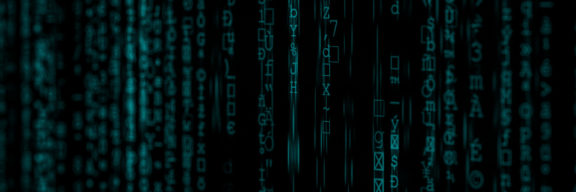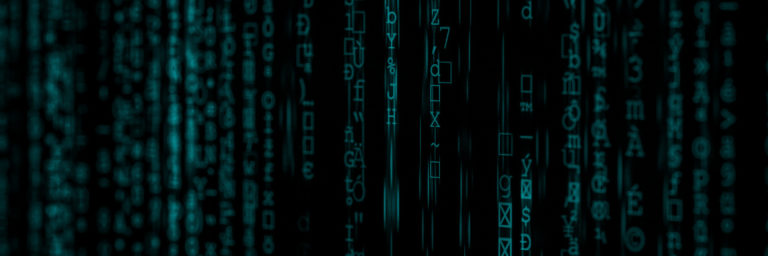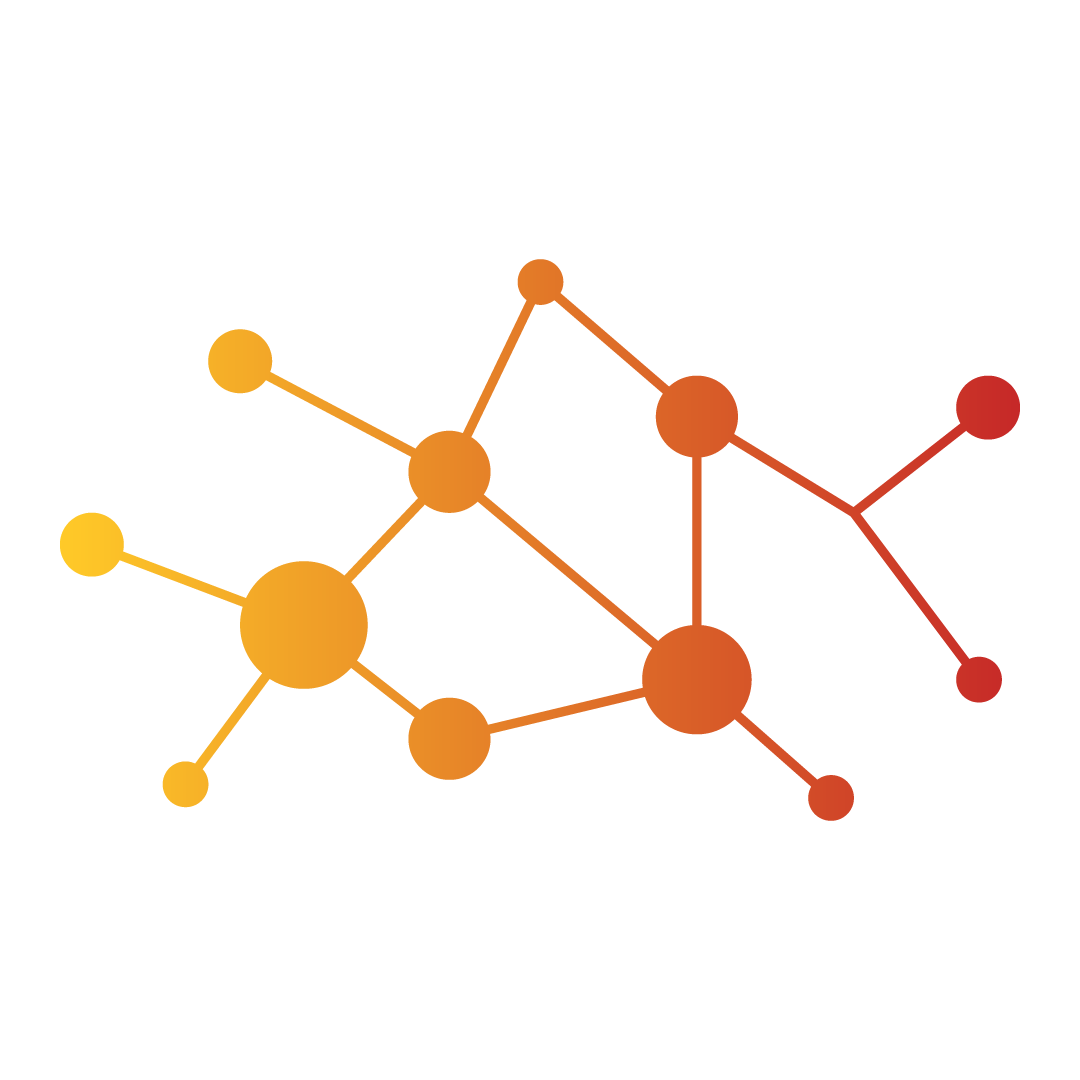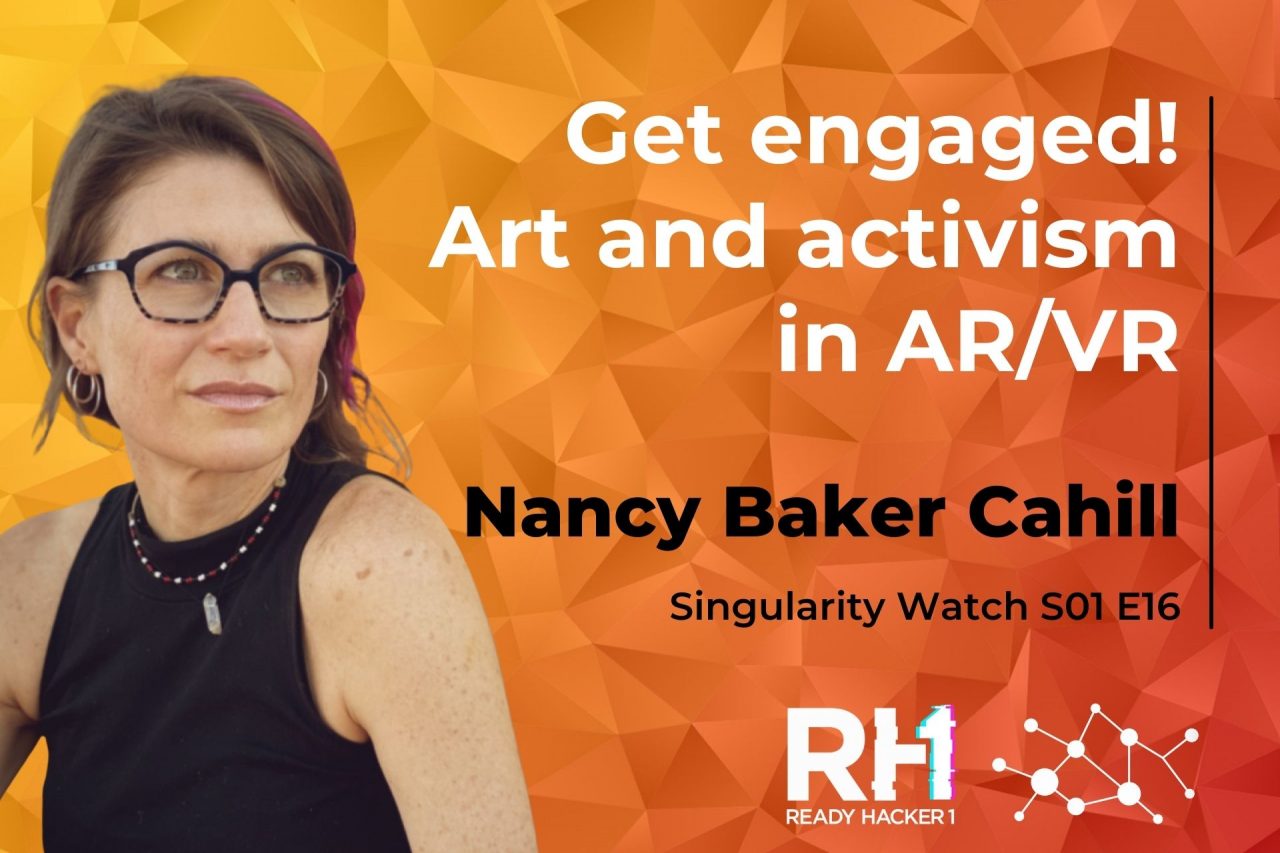In this new episode of Singularity Watch, we meet Nancy Baker Cahill, one of the most interesting artists in the immersive domain.
When Nancy tried AR/VR for the first time, she was already experimenting with immersive art, with a clear goal: make art to raise attention and to mobilize people, without scolding or “teaching” them. Her art is deeply focused on the intersection of art, space, body, and social challenges.
She is the Founder and Artistic Director of 4th Wall, a free AR art platform exploring resistance and inclusive creative expression. Her recent AR public art project, Liberty Bell, earned features in the New York Times, Artnet, Smithsonian Magazine, and The Washington Post, among many other publications. The project, on view through 2021, spans nine historic and culturally significant sites in six cities in the Eastern U.S.
She is the Art and Creative Technologies Advisor for the XRSI Safety Initiative, and she’s currently reflecting on NFTs, smart contracts, and surveillance capitalism.
Oli: I’ve never really been fond of labels for people. However, to understand what somebody stands for, sometimes needed to concepts that kind of define that. So when it comes to something like art, which is a bit like a liquid reality, it’s very difficult to grasp these ideas. If you have to explain to somebody what somebody does, it becomes just hard to kind of do that. So if I had to ask you in light of that, how would you define yourself?
Nancy: I don’t usually like labels either. I guess the best way to describe what I do is the old way I used to describe things: I would say that I’m an artist at the intersection of media, art, and activism.
I’m really interested in looking critically at systems of power and repression and finding ways to examine them using these technologies. At the same time, I’m also really interested in the body as this kind of sacred source of knowledge and how we can use embodied consciousness to know things.
Kavya: How did you become NBC? Would you care to share a bit about your journey and how did you get here? How does one become this artist who leads us to explore so many cross-sections that are just so significant? So would you care to share how it all started, how it is going, and where we are headed?
Nancy: That’s a big question. My childhood was distinguished by a lot of political activism. My dad was a politician, and so we were always interested in engaging in conversations around. So I always thought about what was just and what was unjust. Those were issues that I thought a lot about. And I also love science-fiction. All that was sort of a foundation for who I’ve become. Then, I really got into VR because, when I look back on it, I’ve been really trying to make our experiences for a very long realizing. And I first learned about VR when I was an undergraduate in college, and I was in a political theory class. We talked a lot about this idea of power and justice and how you get people to care and act when you’re in a position of privilege or relative comfort. How do you get to kind of shake people? How do you get them to care? And that’s where VR was first introduced to me nearly as a concept, and that was a very long time ago. Then, I started to make these increasingly immersive embodied experiences as installations using video and large-scale drawing. I made a whole series about how trauma lives in the body and how we process that. I was working on a book written by an incredible author, feminist philosopher Susan Brison, who wrote about sexual assault and the grief process. And it started me thinking about code and the ways we search for both meaning and linearity to sort through chaotic things and not at all linear in our lives, things that surprise us and come out of nowhere. And so anyway, I’ve done this whole series and drawing and the reaction of people to those drawings was so profound that I realized it needed to be amplified and expanded, and that really what I wanted to do to make that experience even richer and more engaging was to put people into it. I actually tried a variety of analog ways to do that. And there was a curator that I really respect. He said to me, “why don’t you just do it in VR?”. And that really sprang from a need to amplifying an experience that was otherwise it was embodied, but that was limited.
Oli: was your what your very first time in VR was like?
Nancy: it was ecstatic! My brother-in-law was really crucial to my story, too. He first invited me to try an Oculus Go, and I just did the variety of standard experiences. My head exploded, and my heart was pounding. It’s like when you get the fever, and I think we all have it, obviously.
Oli: I remember when I tried VR the first time, there were a lot of expectations that obviously it feeds into the whole experience. Some people, they’re not expecting anything, and they’re still blown away by VR. So what was your experience from that point of view?
Nancy: I didn’t have any expectations, actually. And it’s always funny to me the ways in which sometimes people are super critical of their first experiences as if they’ve known anything different. Yes, we’d all love to be appearing to each other right now as holograms, but what we have is still miraculous. Technology is a miracle.
Kavya: I so deeply respect your work because there are only a few people who can help us slice and dice this reality. I want to ask you, from your artist’s perspective, what exactly is Extended Reality? How would you tell the world when you invite them into your extending reality or what is it that you would like to say?
Nancy: I really think it’s an invitation into intimacy, and I don’t mean this in any kind of solipsistic way, but in terms of consciousness. I’m speaking about this as an artist. If we’re just strictly speaking about when we create an experience and art experience, to me, it’s an extension of my consciousness, and it’s an invitation to engage with that consciousness, and the hope is that you bring your consciousness to it and we’re all changed by it. That said, I think all of XR is a challenge to what we’ve traditionally understood as a type of consciousness, and it allows us to expand the conversation in a direction that we can’t otherwise. It’s a language and a set of tools that we are constantly evolving, innovating, changing. So in that sense, I think it’s extraordinarily powerful. As with any tool, VR should be used thoughtfully and intentionally.
Oli: Something that’s striking in your art is that you mix space, forms, and society. I’m going to play Devil’s Advocate: one may argue that if you make public socially engaged art in a place that’s for quite a limited audience, then there’s some kind of contradiction. Is immersive art only something for the few?
Nancy: Oh, I absolutely don’t think it’s something for a few. In many ways, the reason I got into Augmented Reality was because of the barrier to entry to our experience. In that sense, yes, for VR, although it’s becoming increasingly accessible and not necessarily for the best reason. That was the whole impetus behind creating the 4th Wall app, to have a larger, more public, and accessible conversation around art, who gets to decide what it is and how to experience it, and really challenging those norms. I also think that part of the reason I’m really interested in projection mapping and getting into public art or public space. But this term is a kind of contested praise because what does “public” really mean? So I prefer talking about it as like “shared immersive space” because we are all sharing that space presumably. And I know that that might sound like a distinction without a difference, but I actually think it’s more than that. There’s this project that I just did in downtown L. A. called Lunatics, where six artists were invited to project videos on these massive buildings downtown, and we had 13,000 people in an outdoor space. And I projected a VR drawing, a VR capture video, and it was one of the more profound experiences of my life. He was genuinely shared space. The excitement was palpable because we’ve all been cooped up for so long. Most people were vaccinated, most of them were masked, but it was pretty extraordinary. And it was intended for the neighborhood downtown, and people came from all over. So it was probably the most diverse audience I’ve ever seen. And it felt wildly accessible. It was sort of dream accessibility, far more accessible even than they are. I’ve made the app free, but we all know that not everybody has a mini-computer, and this relies on a certain generation of smartphones to operate. And that’s like always trying to push into where are the spaces where we can be more available to work?
Oli: In April, BBC published “The Year the Earth Changed,” a documentary directed by Tom Beard and narrated by David Attenborough, who’s a real favorite of mine, talking about the positive impact of the global pandemic and the lockdowns on the natural world. It’s quite obvious that a world in lockdown is a great place for nature. But what happened to location-based art, as some of your projects? Has it been a challenging year from that point of view?
Nancy: I can speak directly to that. In my Hollywood apartment, I remember hearing birds for the first time. It was like Nirvana for animals for a minute. For me, it was kind of interesting because we had this big project, Liberty Bell, which was held in six cities, nine different culturally or historically significant locations, where we had located this artwork, and it ended up being such an extraordinary blessing because we had intended from the beginning to be widely available and accessible as something that was relocated and shared immersive space. But all of them happened to be in places where you could experience them. The harder part, I would say it was around specific exhibitions, group exhibitions. The intrepid few who went out and did experience Liberty Bell I think, really enjoyed it, and for that reason, we did extend it.
Kavya: In April, you launched your first NFT, one of the defining trends in 2021 for content distribution. So what’s the meaning of this for you? Is this something new? Is this something that’s going to revolutionize digital art in general, or is it just about this digital art market?
Nancy: I think it’s all of the above. I think there’s no denying this sort of hyperbole of this moment and the gold rush and the kind of insanity that is created. It’s new for me because I’ve never engaged with Blockchain in my past work, although it’s something I’ve thought about for years. It’s that’s how I met my Intellectual Property Lawyer. We sort of bonded over Blockchain back in time, but I think that there already has been a lot of fruitful discourse around the environmental impact of NFTs. That’s something super important to me personally, as well as the value of digital art, the intrinsic value. There have been a lot of red lines drawn as there always are when money’s involved. And I think that while some of the discussions have been contentious, I think they’re all worthwhile. And I really see it just as another platform tool medium to engage in advancing the causes that I’m personally interested in the project. I’ve been working on a project that I developed, and it’s called “contract killers.” I’ve been thinking a lot about smart contracts, thinking a lot about why artists are so drawn to the idea of NFT. We have been on the “receiving end” of a truly inequitable system for a long time. And accountability has not been a part of most of our experience. Obviously, there are exceptions, as there always are, but generally, the opportunity to have real accountability to be able to track provenance, to get paid automatically, and not have to chase down people. That was the initial impetus. But the more I thought about it, and I thought about contracts and breached contracts. I thought about social contracts. Let’s look at different systems in our cities and our world: we are not where we are failing each other and not living up to our mutual agreements, and not recognizing that we genuinely belong to each other. So it became about that. And so I created an animation of a handshake resolving, and I went, and I put it in front of City Hall because we have a lot of issues going on here in Los Angeles right now. And I put it in front of the Hall of Justice because the prison complex is huge. It was right and then over a pile of cash. I’ve been working with Snark Art. They have been great. They have somehow managed to accommodate my request to use a Proof of Stake cryptocurrency. And so they have adapted their platform to do that, which is really exciting. This is another aspect: how do we care for the environment in this process? It’s really a very socially conscious piece. It’s not intended to be preachy as much as raise questions and inspire some discourse around agreements and what are these contractual agreements, or what is a consensus algorithm as it applies to our human needs as it applies to our lives, the lives of people who are unhoused, people who are imprisoned, people who are in any way on the receiving end of inequity in society.
Kavya: At the end of 2020, we shared the virtual stage at Hirshhorn Museum, discussing surveillance technologies as a human rights issue. And so again, we’re talking about the space around us, the physical virtual. Some of these surveillance tools are visible, but many are invisible, and yet they exist and influence our lives as citizens and as physical and digital humans. What’s the impact on art and especially on this sort of socially engaged art of all that is converging right in front of our eyes?
Nancy: This is our shared obsession. Maybe it’s one of many, but this is particularly important to me as an artist who uses geolocation, as an artist who uses VR. There’s a great book, The Costs of Connection, that talks a lot about the invisibility of the active practices that affect us, back to this idea of being critical of the tools that we use. I always just encourage people in space, too, especially when I lecture. I asked some students to think about the impact when they pick up any kind of technology. Any time that you do that, think about not just not in some paranoid way of like “who’s listening” and “who’s watching,” but like “who is profiting from your engagement in this.” And why does it matter? Why do we have to be mindful of these things? Many people say, “I don’t have anything to hide,” but that is actually a very dangerous position to take because it absolves you of your participation in this larger networked endeavor in the surveillance economy. I don’t think that for one second, we should let our guard down. This is an ongoing issue, and there is a number of layered complexes.
Oli: Surveillance is a matter of freedom, and I’d also say it’s a matter of inequality: freedom in a controlled environment is reserved for those who have a preeminent position. Speaking of freedom, last year you published the AR project “Liberty Bell.” So Nancy, what’s that about?
Nancy: You know, I am not subject to the same biased algorithms of many of my friends because of the color of my skin. My privilege is something I wake up with every single day. There’s this documentary, Exterminate All the Brutes, it’s the history of white supremacy, and it’s devastating. It’s an incredibly powerful, innovative documentary. It sort of defies genre. And when I think about the idea of freedom is an almost unachievable ideal. What is freedom? Anyway, that’s what was really the question of Liberty Bell. Here we have this “founding principle” in a country that was established through genocide and has continued to oppress people from the beginning. I think freedom is a really tricky concept. I don’t think it’s a simple one, and I think when you bring the surveillance economy into it, and we get into even deeper territory which it affects, it certainly affects certain populations, vulnerable populations disproportionately, but it actually does impact everyone. I don’t know anyone who is legitimately free of that influence.
Oli: I noticed that you don’t hesitate to recognize the political role of your art. Let’s think about “Battlegrounds,” for instance. But politics in the US is a bit of a “third-rail topic.” Why do you think it’s so scary to debate about politics or, let’s say, “being political”?
Nancy: I think that the problem is that we get super didactic and entrenched in refused, and what I hope to do, for example, like the Battleground Project, is to prompt really thoughtful discourse, not to be again wagging a finger and scolding people, nobody wants to be scolded. I don’t want to be scolded by fellow liberals, by the way, don’t be scolded by anybody, what I want to do is to dig in, you gotta be willing to be uncomfortable, you gotta be willing to have these difficult conversations, and that’s what I’m trying to do in all the work. I’m never interested in putting a stake in the ground, saying this is how it is. What do I know? I don’t know, this is my experience, that might have been your experience. I think we have to engage in these conversations with a degree of curiosity. There’s a wonderful podcast called Your Undivided Attention. One of their episodes recently was about people with antipodal views. So, in war-torn countries and even in the US, how do you bring people with such radically opposing views together and find common ground? His technique is to use active listening. You use storytelling, and you use neutral subjects to engage, and you get people to first bond on the things like let’s talk about mothers-in-law. You don’t sort of dry talk about Israel. That’s kind of interesting to me. I, of course, would take a slightly more incisive approach immediately because I have an opportunity to say at once, there’s not a lot of necessary storytelling in a site activation or an idea. My hope is just that. This is why I only engage artists who are super rigorous and thoughtful and collaborate with them because this is their work most of the time, not mine. My hope is that in the embodied engaged experience of the immersion, the viewer will reconsider or consider an idea perhaps in a different way. That’s all we can do.
Kavya: Let’s talk about your AR art platform, 4th Wall. So, do you want to tell us something about that? Especially how is it evolving, and which directions is it taking?
Nancy: 4th Wall is available on Android and iOS, and it has sort of two parts. The first part includes our drawings that are animated and dimensional, they’re in 360 degrees, and you can basically scale them up and down, put them anywhere you want in the world. The other part is made by our curated interventions and exhibitions. Some of those are my own work. Some of them, like Battlegrounds, are curated exhibitions that are location-specific. One of the things that I’m really excited about, we’re in the process of updating the app to include 3D objects, geo anchoring, and a bunch of other things. I’m also really excited because I am going to be a part of a Monument residency this summer at Oxy Arts here in L. A. I’m one of five artists, and what we’re really talking about and thinking about is not so much sort of looking back and honoring an invisible past or a forgotten past, or erase past, but imagining the future: what would a future monument look like and how could technology be engaged to realize that future vision? So it’s a difficult problem, a difficult task, but a really exciting one. And so, I’ll be hosting those monuments as well on the app in Los Angeles at the end of September.
Kavya: In every episode, we ask our guest what does singularity mean to them. Do you see that singularity is occurring now or is it going to occur in the future, or whatever it means to you? Whatever message do you think that we should derive out of it? What would you say to that?
Nancy: I don’t think I have AI have dystopian fears. I certainly can envision and imagine a world of pure singularity. I think that we’re getting closer to that with Neuralink and with the way that these algorithms control our behavior already. So, due to service the surveillance economy, I do think that there’s a legitimate point that I heard more recently that I just thought was chilling but also a call to action. Yuval Noah Harari was talking about AI companions and a world in which all of our needs are stated, where our needs are curated with smart appliances or whatever like you walk in. It knows that you’re tired and this is what you need or whatever you like kind of extrapolated out into the future. He talked about how all of those things that are easy, the things that make our lives more convenient, are often the things that endanger us the most in our behavioral training in our dependency. And so, I think that the bigger crisis that he identified is a civic one; if you are so fulfilled and every need is anticipated and taking care of, why on Earth would you care about your fellow citizens who live thousands of miles away? I think it’s something that I’m going to continue to think about. This assumes a certain privilege that you have access to electricity, which a huge portion of the world does not. But let’s assume that we’re talking about people with access to electricity and to these appliances and computers. So I do think that that’s what I personally want to start beginning to think about how to push against and how to continue to invite conversation around the needs of others and the fact that we again, not to sound corny. Still, we do belong to each other and how we use technology to remember that to act on it.






